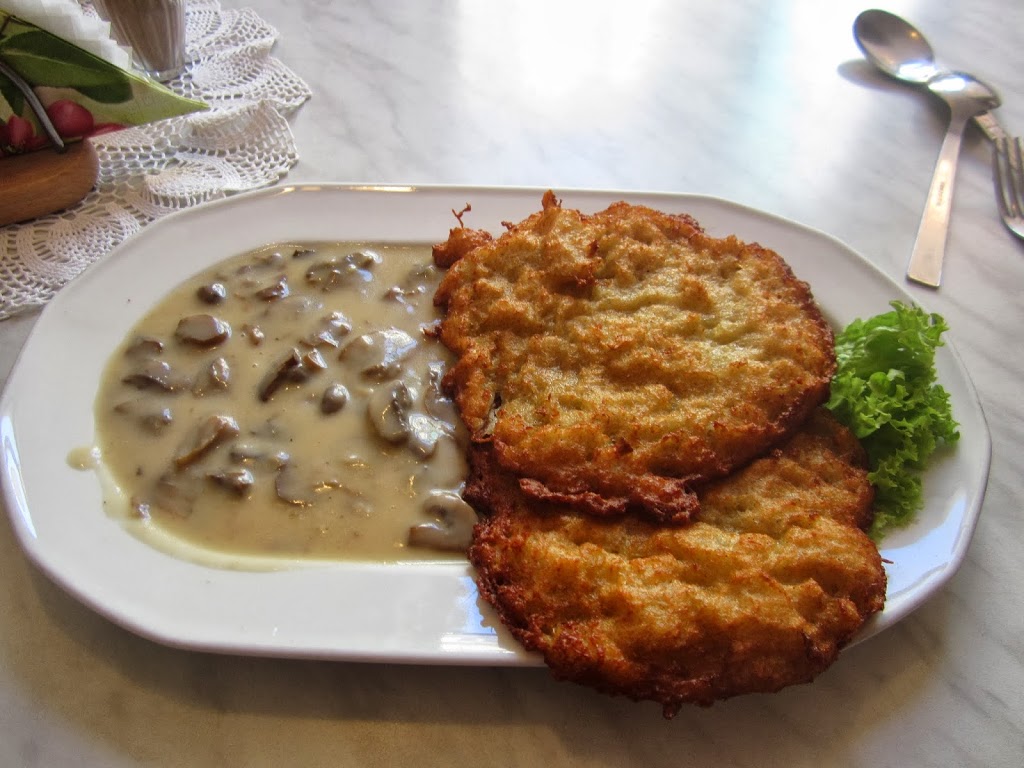Polish food ranges from the fattier meats and starchier potatoes and pierogies to the elegant and refined.
Admittedly, ten days in Poland is not enough time to experience the full spectrum of Polish cuisine. In Krakow we splurged on a ‘VIP’ dinner following a Chopin concert in a small salon at the legendary Wierzynek on the Main Market Square. It was our wedding anniversary, and it was probably the fanciest, most elegant 6-course dinner I’ve had in my life.
But at the other end I found most traditional Polish food to be hearty, high-caloric, and of the kind that can be stored away for a cold winter. I found entrees of veal, duck and sausage. Potatoes were good but they’re either fried as pancakes or part of doughy dumplings served in butter. In a specifically ‘traditional’ Polish restaurant, a salad bar translates to four ways to prepare cabbage or beets, e.g. sauerkraut(s). A side salad is sliced ‘cucumbers’ that are really pickles, or cold cabbage like a slaw, though both were quite good. One restaurant served homemade bread with two spreads. I tried the first spread – it was interesting for the first few tastes but a bit fatty. Then I read the menu – it translated to English as flavored lard. Fresh vegetables are not traditional fare, due to the cold northern climate. And to send you out warmed on the inside – one ‘traditional’ restaurant included cherry vodkas at the end of every meal.

